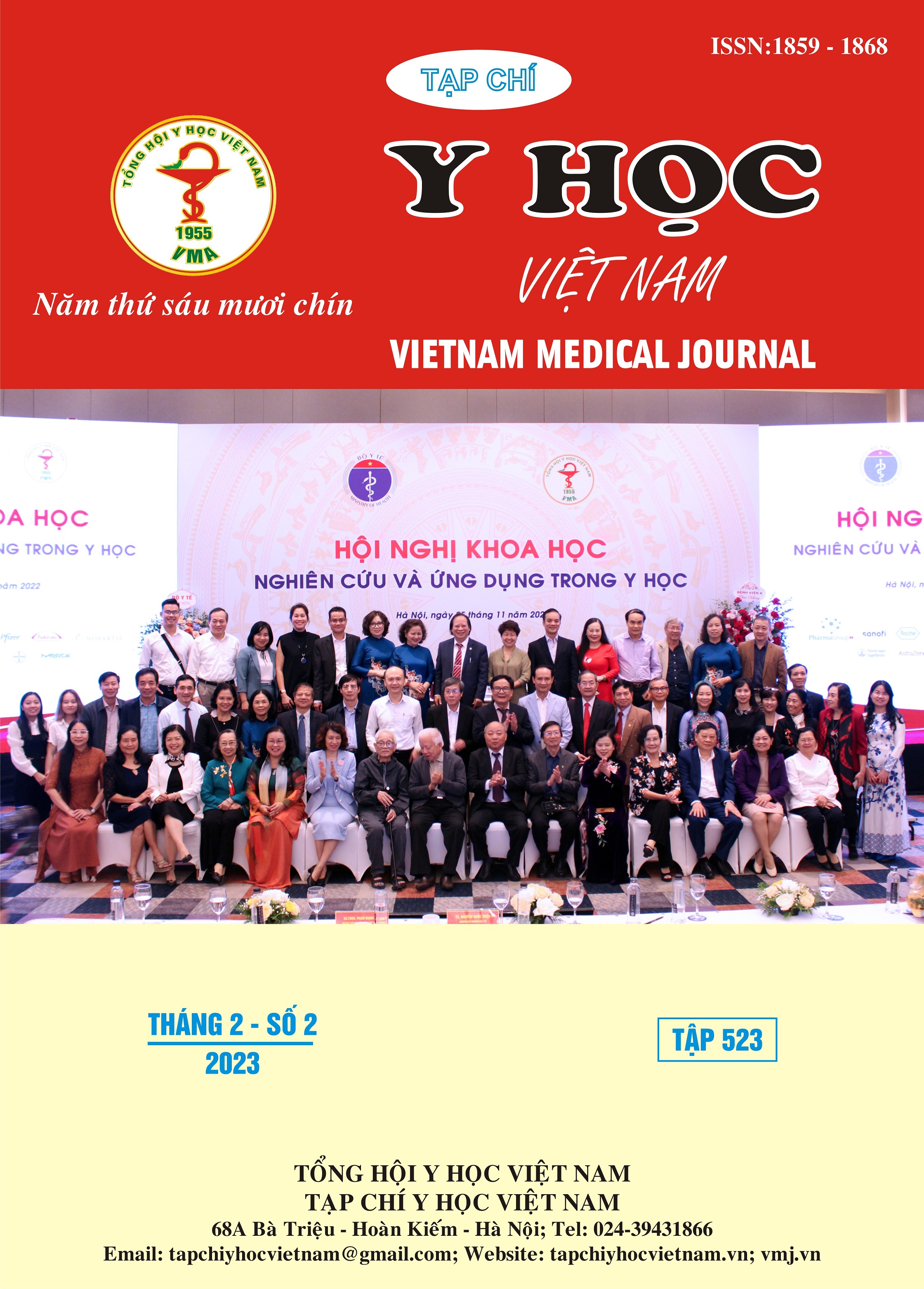MULTISLICE COMPUTED TOMOGRAPHY IN EVALUATION OF SINONASAL ANATOMIC VARIANTS IN CHRONIC RHINOSINUSITIS USING C.L.O.S.E CHECKLIST
Main Article Content
Abstract
Purpose: To determine the incidence of sinonasal anatomic variants using “C.L.O.S.E” checklist in patients with chronic rhinosinusitis.Material and methods: A descriptive, prospective and retrospective study of 200 patients with chronic rhinosinusitis had performed MSCT and evaluated by “C.L.O.S.E” checklist at the Radiology Center of Hanoi Medical University Hospital. Result: In our study, the most frequent sinonasal anatomic variants were Onodi cells (98,5%), Agger Nasi cells (85%), septal nasal deviation (63,5%), Haller cells (46%), concha bullosa (34%). The osteomeatal complex obstruction was seen in 76,5% patients. By using C.L.O.S.E checklist, cribriform plate type II by Keros accounted for >70% in both sides. Lamina papyracea dehiscence was seen in <5%. 108/197 cases with onodi cells were exposed to optic nerve but were 5,58% compared with internal carotid artery. Anterior ethmoid artery was in safe place in most cases (> 70% in both sides). Sphenoid sinus type C by Congdon accounted for 61%. Conclusion: By studying 200 patients with chronic rhinosinusitis, the result showed the most frequent sinonasal anatomic variants were Onodi cells, followed by Agger Nasi cells and septal nasal deviation. Evaluation of sinonasal imaging findings using “C.L.O.S.E” checklist have an important role to minimize complications in Functional Endoscopic Sinus Surgery.
Article Details
Keywords
sinonasal anatomic variants, chronic rhinosinusitis.
References
2. O’Brien WT, Hamelin S, Weitzel EK. The Preoperative Sinus CT: Avoiding a “CLOSE” Call with Surgical Complications. Radiology. 2016; 281(1):10-21. doi:10.1148/radiol.2016152230
3. Y C, Fa K. An update on the classifications, diagnosis, and treatment of rhinosinusitis. Curr Opin Otolaryngol Head Neck Surg. 2009;17(3). doi:10.1097/MOO.0b013e32832ac393
4. Weitzel EK, Floreani S, Wormald PJ. Otolaryngologic heuristics: a rhinologic perspective. ANZ J Surg. 2008;78(12):1096-1099. doi:10.1111/j.1445-2197.2008.04757.x
5. Shpilberg KA, Daniel SC, Doshi AH, Lawson W, Som PM. CT of Anatomic Variants of the Paranasal Sinuses and Nasal Cavity: Poor Correlation With Radiologically Significant Rhinosinusitis but Importance in Surgical Planning. AJR Am J Roentgenol. 2015; 204(6):1255-1260. doi:10.2214/AJR.14.13762
6. Nouraei S a. R, Elisay AR, Dimarco A, Abdi R, Majidi H, Madani SA, Andrews PJ. Variations in paranasal sinus anatomy: implications for the pathophysiology of chronic rhinosinusitis and safety of endoscopic sinus surgery. J Otolaryngol - Head Neck Surg J Oto-Rhino-Laryngol Chir Cervico-Faciale. 2009;38(1):32-37.
7. Kantarci M, Karasen RM, Alper F, Onbas O, Okur A, Karaman A. Remarkable anatomic variations in paranasal sinus region and their clinical importance. Eur J Radiol. 2004; 50(3): 296-302. doi:10.1016/j.ejrad.2003.08.012
8. FADDA GL, ROSSO S, AVERSA S, PETRELLI A, ONDOLO C, SUCCO G. Multiparametric statistical correlations between paranasal sinus anatomic variations and chronic rhinosinusitis. Acta Otorhinolaryngol Ital. 2012;32(4):244-251.
9. Stammberger H, Hosemann W, Draf W. [Anatomic terminology and nomenclature for paranasal sinus surgery]. Laryngorhinootologie. 1997;76(7):435-449. doi:10.1055/s-2007-997458


